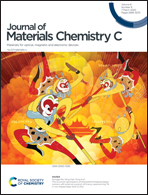Elegant design of carbon nanotube foams with double continuous structure for metamaterials in a broad frequency range
Abstract
Carbon nanotube (CNT) foams with negative permittivity and permeability are successfully prepared by chemical vapor deposition (CVD) and post-treatment. A double negative metamaterial in the 1–1000 MHz frequency range with double continuous structure results by effectively compounding the CNT foam with a polymer material, i.e. epoxy or nanosilver silicone resin. The negative permeability is specifically attributed to the three-dimensional CNT interactions as clear from the study of the relation of the material microstructure and the macroscopic measurements. Compared to CNT foam/epoxy composites, CNT foam/nanosilver/silicone composites have a lower permeability but a more excellent electrical conductivity or permittivity. It is also shown that the carbon source time during CVD and post-pressurization can be adjusted to allow for both negative permittivity and permeability. This contribution highlights a convenient method to obtain a metamaterial in a much larger frequency range (ca. 1 to 1000 MHz) than the state-of-the-art. It thus supports the expansion of the application range of metamaterials and simplifies their preparation, which is of great significance for the wider use of these materials.



 Please wait while we load your content...
Please wait while we load your content...